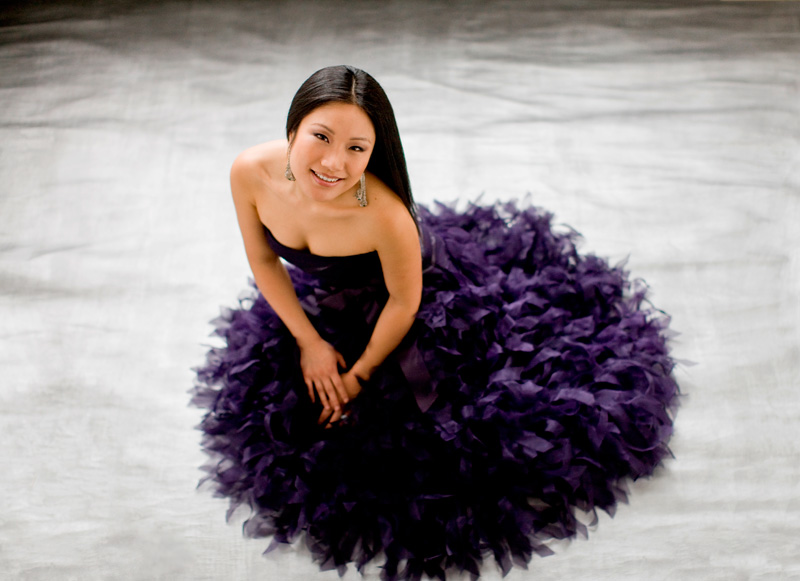In a concert presented by International Performing Artists, pianist Xiayin Wang joined with the Escher Quartet in works by Fauré, Piazzolla, and Schumann. Both Ms. Wang and the Escher Quartet are much in-demand performers who have appeared in venues around the world and enjoy countless accolades. This pairing of highly accomplished artists had the promise of being an evening filled with masterful music making.
The Piano Quartet No. 1 in C minor, Op. 15 by Gabriel Fauré (a last minute change from the scheduled Piano Quartet No.2 in G minor, Op. 45 by the same composer) opened the program. There were intonation issues at the beginning of the Allegro molto moderato that got things off to a problematic start, especially in contrast to the pristine piano work. Eventually, this all came under control. The excellent solos from the string players were highlights of the opening movement. The Scherzo sparkled, and the sorrowful Adagio was beautifully played. It is said this movement was influenced by Fauré’s heartache about his broken engagement to Marieanne Viardot, and one can feel it. The ending impression was mixed – the notes were there, and the playing (other than the intonation issues) was polished, but the feeling of a true ensemble was not altogether present. It did seem like a case of three plus one, instead of a true quartet. Ms. Wang is a fine pianist, and her playing in this demanding work was truly exceptional, but her laser-like focus on the virtuosic aspects of her part gave the impression of a mini-concerto performance as opposed to chamber music. One can speculate why this was – perhaps the last minute change of program? In any case, it was a solid, if less than completely satisfying, performance.
Three works from Astor Piazzolla, Otono Porteño, Oblivion, and Libertango, in arrangements by the composer-pianist Clint Edwards, followed the Fauré. Mr. Edwards captured the essence of these pieces in his effective arrangements. From the pizzicato opening of Otono Porteño, through the poignant laments of Oblivion, and finally the tease of a lugubrious opening of the Libertango that finally burst into the saucy tango style that Piazzolla was so famous for, it was played with a perfect mix of spice and substance. It was an enjoyable end to the first half that showed both Ms. Wang and the Escher to great advantage.
After intermission, the Piano Quintet in E-flat major, Op. 44 from Robert Schumann was the only work on the second half. Written for and dedicated to Schumann’s wife, Clara, during a period when the composer had finally won his battle to marry his beloved, this work is the product of a musician at the height of his powers and with seemingly limitless creative energy. The history of this 1842 work is highly interesting in many ways. The idea of combining a piano part with a standard string quartet had never be done prior to this work; the excellent program notes state that this was the first piano quintet written, but that is technically not entirely accurate, because other composers, notably Schubert in the Trout Quintet, wrote for quintet using the double bass in place of the second violin. In any case, one must credit Schumann with the invention of a new form of chamber music. Incidentally, during a private performance prior to the public premiere, Clara was too ill to play, so Felix Mendelssohn stepped in and sight-read the piano part! Mendelssohn also suggested an addition of a second trio in the scherzo, which Schumann added.
Whatever reservations I had about the interaction of Ms. Wang with the Escher were not an issue during the Schumann. Ms. Wang was fully engaged with her partners at all times in a performance that was worthy of this great composition. Ms. Wang made short work of the difficult piano part with ease, as one would expect from a player of her caliber, but with the added dimension of a true collaborator instead of soloist in an ad hoc role. This was the synthesis of dynamic forces that I had been hoping for earlier. It was “all-for-one, and one-for-all” playing that I would normally associate with players who have an extensive history together. The end result was a performance that was well conceived in its bold, joyful, and optimistic outlook. I am still basking in its afterglow.

